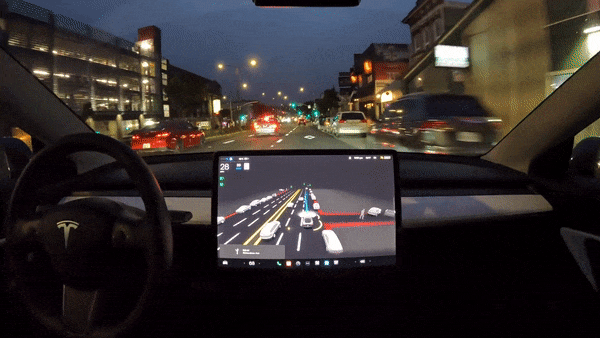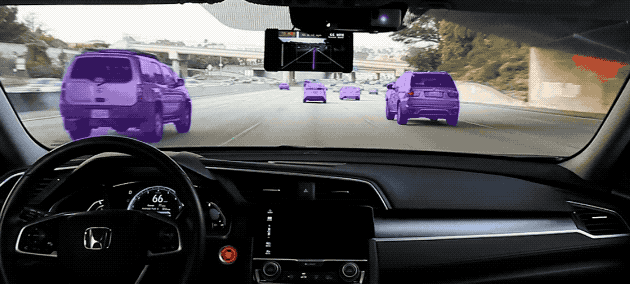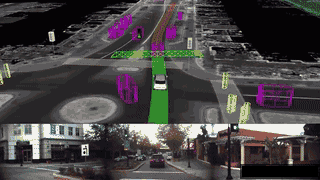As more and more self driving cars come to market from companies such as Waymo, Cruise, Tesla and more, it will be important for children to understand how these cars work and why they are safe. This guide provides a high level overview mapping complex concepts to easy to understand explanations for kids that should help teach kids about self driving cars.


Sensor Fusion
Sensor fusion refers to the integration of data from multiple sensors, such as cameras, radars, lidars, and ultrasonic sensors, to create a comprehensive and accurate understanding of the vehicle’s environment. By combining information from different sensor modalities, self-driving cars can overcome limitations inherent in individual sensors, such as occlusion or environmental interference, thereby enhancing perception and decision-making capabilities.
Kid friendly explanation: Imagine you have different friends with special abilities. One friend can see really well in the dark, another can hear super far away, and another can feel things with their hands. Sensor fusion is like when you put all your friends together to solve a mystery. They work together to see, hear, and feel everything around them, making it easier to figure things out.


Localization and Mapping (SLAM)
Simultaneous Localization and Mapping (SLAM) is a fundamental concept in autonomous driving that involves the real-time estimation of a vehicle’s position within its environment (localization) while simultaneously constructing a map of the environment (mapping). SLAM algorithms utilize sensor data, such as GPS, lidar scans, and odometry measurements, to iteratively update the vehicle’s pose and generate a coherent representation of the surroundings, enabling precise navigation and path planning.
Kid friendly explanation: Think of SLAM like drawing a map while playing hide-and-seek. When you’re playing, you try to find your friends while also remembering where you are. SLAM helps the car do the same thing. It uses special tools (like GPS and a special kind of camera) to figure out where it is and make a map of the places it’s been, so it doesn’t get lost.
Path Planning and Decision Making
Path planning involves the generation of a safe and efficient trajectory for the self-driving vehicle to follow, taking into account various constraints such as traffic rules, dynamic obstacles, and vehicle dynamics. Decision-making algorithms analyze the environment, predict the behavior of other road users, and determine the optimal actions to achieve the vehicle’s objectives while ensuring safety and adherence to legal and ethical standards.
Kid friendly Explanation: Path planning is like planning your route on a treasure hunt. You need to figure out the best way to get from one place to another without bumping into things or getting lost. Decision-making is like choosing which path to take when you come to a fork in the road. The car’s computer thinks like a really smart treasure hunter, considering all the options and picking the safest and fastest way to go.
Computer Vision
The core of autonomous perception lies in computer vision algorithms that analyze the data collected by cameras. Deep learning models, often convolutional neural networks (CNNs), process these images to identify lane boundaries, road signs, traffic lights, pedestrians, and other vehicles. Through techniques like semantic segmentation and object detection, the computer discerns objects of interest and their spatial relationships, enabling real-time decision-making.
Kid friendly Explanation: Now, imagine you have a super smart friend who can look at pictures and understand what’s in them. That’s what the computer inside the car does! It looks at all the pictures from the cameras and figures out where the lanes are, where other cars are, and even if there’s a traffic light or a stop sign.


Summary
Self-driving cars utilize a sophisticated amalgamation of sensor fusion, computer vision, SLAM (Simultaneous Localization and Mapping), and path planning to navigate autonomously. Through sensor fusion, data from cameras, radars, lidars, and ultrasonic sensors is integrated to create a comprehensive understanding of the vehicle’s surroundings, including the positions of other vehicles, pedestrians, road signs, and obstacles. Computer vision algorithms then analyze visual data in real-time, identifying lane markings, traffic signs, traffic lights, pedestrians, and various objects on the road, enabling informed decision-making. SLAM technology plays a pivotal role by simultaneously localizing the car within its environment and constructing a detailed map of the terrain using sensor data such as GPS, lidar scans, and odometry measurements. This process allows the car to autonomously navigate and plan routes effectively. Path planning algorithms consider factors such as traffic laws, road geometry, speed limits, and obstacles to generate safe and efficient trajectories for the vehicle to follow, ensuring collision avoidance and adherence to traffic regulations. In essence, the integration of these advanced technologies enables self-driving cars to perceive their surroundings, localize themselves, and make intelligent decisions about navigation and trajectory planning, facilitating safe and efficient autonomous driving in diverse real-world scenarios.
Kid friendly explanation: Self-driving cars are like really smart robots that use special powers to drive themselves. They have super eyes, ears, and brains! These cars have cameras, radars, and other cool gadgets that help them see and hear everything around them. They can tell where other cars are, where the road ends, and even when to stop for a red light. Their computer brains use all this information to make decisions, like which way to go and how fast to drive. They also make maps of where they are and where they want to go, just like when we draw a map to find our way in a game. These maps help them figure out the best route to take without bumping into anything. So, with their special powers and smart brains, self-driving cars can drive safely all on their own, just like magic!
We hope by understanding these fundamental concepts of autonomous vehicles and self driving cars you feel equipped to teach kids about self driving cars!
For younger learners check out Aria and the Self Driving Car on Amazon!

